You know how every Filipino birthday celebration needs pancit for long life? Well, let me share my go-to recipe that's been a hit at every birthday party I've hosted. Unlike the usual pancit loaded with all sorts of toppings where you can barely find the noodles, this Pancit Puti lets the noodles take center stage.
Every time I serve this at birthdays, guests are surprised by how such a minimalist-looking dish can pack so much flavor. Plus, it's perfect when you're cooking for a crowd since it's both budget-friendly and quick to prepare. My family can't celebrate a birthday without it now.
Jump to:
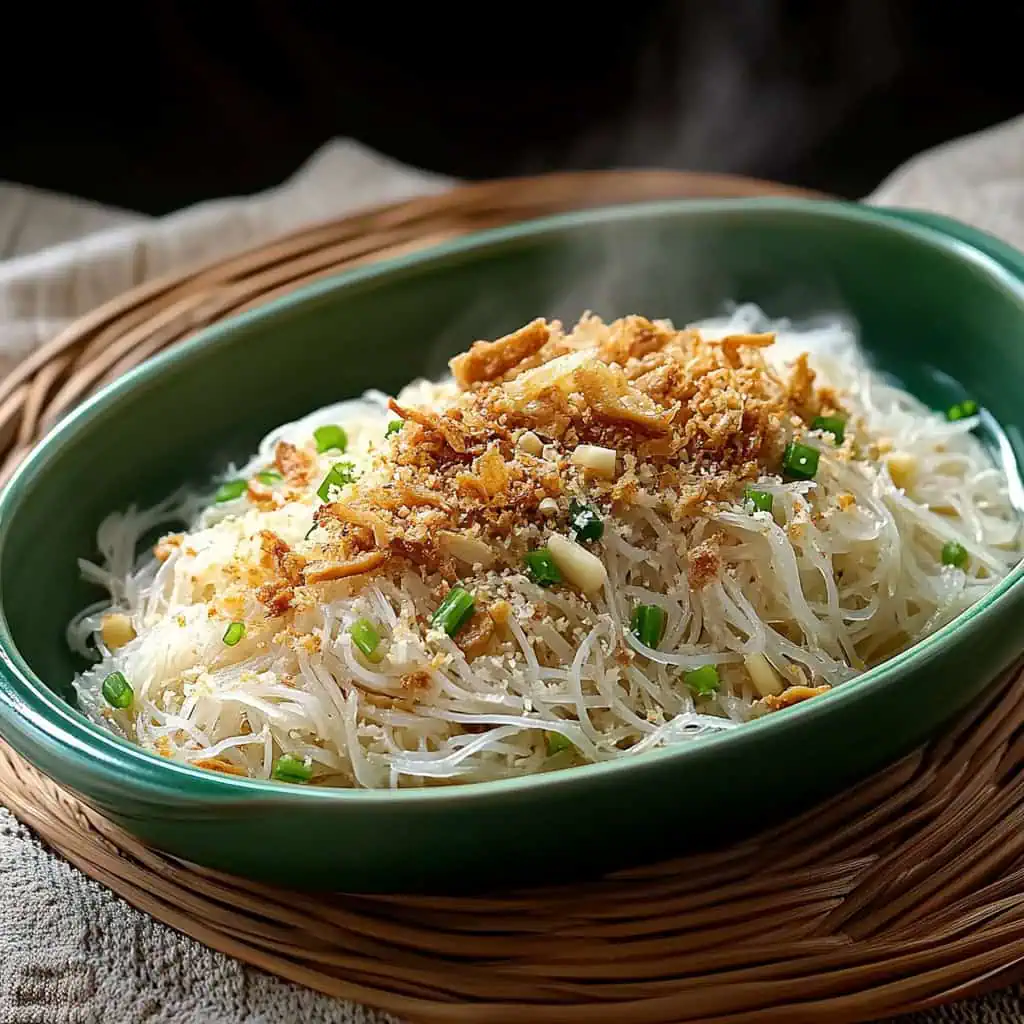
Why You'll Love This Recipe
- Authentic Filipino Flavor: Experience the pure taste of perfectly seasoned noodles without heavy sauces
- Quick & Economic: Ready in just 30 minutes using simple, affordable ingredients
- Versatile: Can be served for everyday meals or special occasions
- Perfect Balance: The delicate noodles complement the rich chicken broth and crispy toppings
Ingredients
The ingredients in Pancit Puti are carefully selected to create a dish where simplicity becomes the star. Rice noodles form the delicate base, absorbing the rich flavors of concentrated chicken stock. Garlic and shallots provide the essential aromatic foundation that Filipino cuisine is known for, while fish sauce adds depth without darkening the noodles.
Sesame oil brings a subtle nuttiness, and white pepper adds warmth without visual distraction. The genius comes in the contrasting garnishes – crispy chicharon and fried garlic add texture against the soft noodles, while calamansi brightens each bite with citrus acidity.
Each element serves a purpose in this deliberately minimalist dish, proving that when quality ingredients are handled with care, even the simplest combinations can create extraordinary flavor.
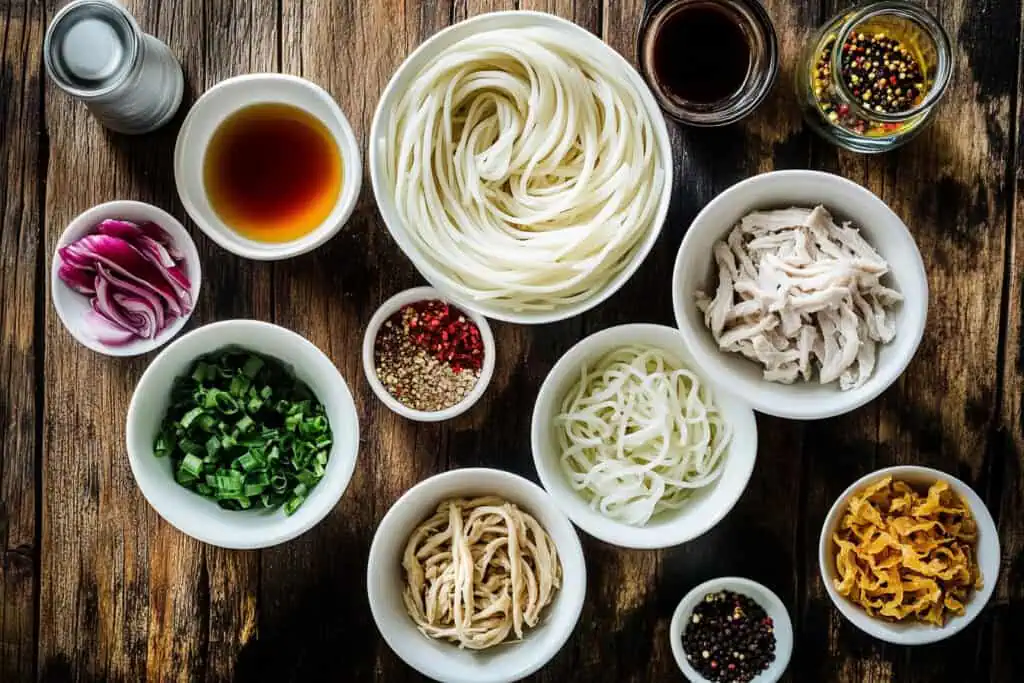
- 400g rice noodles (bihon) - soaked in water for 15 minutes and drained
- 1 large chicken leg and thigh section - pre-boiled and flaked
- 2 cups concentrated chicken stock
- 6 cloves garlic, minced
- 2 shallots, minced
- 3 stalks spring onions, chopped
- 2 tablespoons sesame oil
- 2 tablespoons fish sauce
- White pepper to taste
- Cooking oil
For Garnish:
- 2 cups crumbled pork rinds (chicharon)
- Crispy fried garlic
- Lemon or Calamansi wedges
Equipment
- Large wok (kawali): For even heat distribution and proper noodle tossing
- Strainer: For draining soaked noodles
- Sharp knife: For mincing garlic and shallots
- Cutting board: For ingredient preparation
- Measuring cups and spoons: For precise ingredient portions
- Large pot: For pre-boiling chicken
- Tongs: For handling noodles while cooking
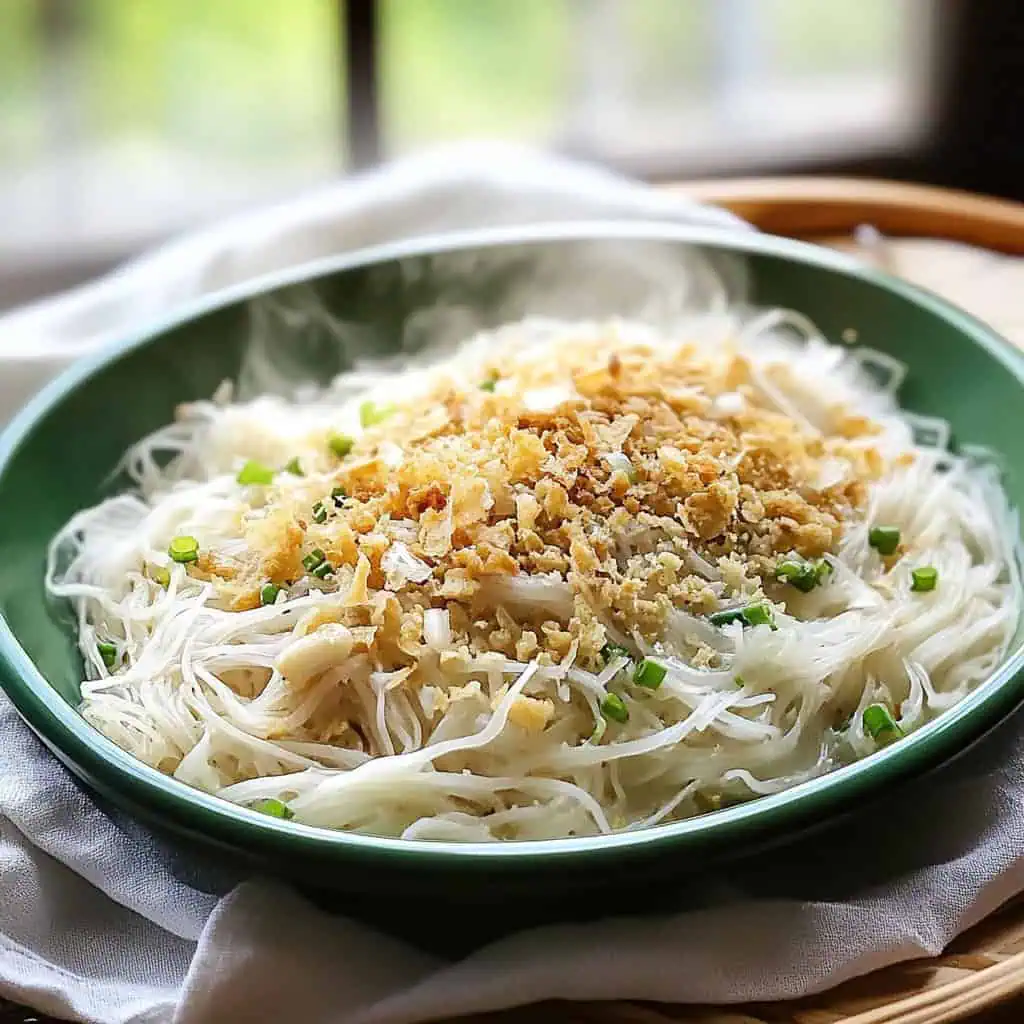
How To Make
- First, soak 400g rice noodles (bihon) in water for 15 minutes, then drain well. While noodles soak, boil the chicken leg and thigh until cooked through, about 20-25 minutes. Remove chicken meat from bones and flake into small pieces.
- Heat your wok over medium heat and add oil. Once hot, add minced garlic and shallots. Cook until shallots are soft and garlic is fragrant, about 2-3 minutes. Don't let the garlic brown.
- Turn heat to high and add your drained noodles and flaked chicken. Start stir-frying while slowly adding chicken stock, just half a cup at a time. Keep stirring to help noodles absorb the stock evenly.
- When noodles have absorbed most of the stock and are almost done, add your chopped spring onions, sesame oil, and fish sauce. Season with white pepper. Keep stir-frying for another minute, mixing everything well. Noodles should be tender but still slightly firm.
- Move everything to your serving plate. Top generously with crispy fried garlic and crumbled pork rinds (chicharon) while the noodles are still hot. Serve right away with lemon or calamansi wedges on the side. Tell everyone to mix in the toppings just before eating to keep them crunchy.
Remember: The key to great Pancit Puti is in the ginisa (garlic-shallot sauté) and using really good chicken stock. If your noodles look dry while cooking, just add a bit more hot stock. Keep stirring to prevent clumping, and you'll have perfect noodles every time.

Tips from Lola's Kitchen
- Use homemade chicken stock for the deepest flavor - ideally made a day ahead
- Don't oversoak the noodles - they should still be slightly firm before cooking
- Sangkutsa (pre-frying) the aromatics until fragrant is essential - this builds the foundation of flavor
- Add the stock gradually - this allows the noodles to absorb the flavor evenly
- Keep the heat high when adding the noodles to prevent them from becoming soggy
- Garnish just before serving to maintain the textural contrast
- Let everyone squeeze their own calamansi over their portion for the freshest citrus kick
- The quality of your chicharon matters - freshly made or premium store-bought makes a noticeable difference
Substitutions
- Rice noodles: Can substitute with sotanghon (glass noodles) or miki (egg noodles)
- Chicken: Turkey, pork, or shrimp work beautifully in this dish
- Shallots: Regular red onions provide a stronger but still complementary flavor
- Sesame oil: Any neutral cooking oil works, though you'll miss that nutty aroma
- Fish sauce: Light soy sauce or salt can work, but will change the authentic flavor profile
- Chicharon: Toasted breadcrumbs, crushed toasted garlic, or roasted chopped peanuts make good alternatives
- Calamansi: Lemon or lime juice both provide the necessary bright acidity
Troubleshooting
- Noodles too dry? Add more hot chicken stock gradually while stirring. Always keep some extra hot stock ready.
- Noodles too soft? You likely oversoaked them initially. For rescue, toss over very high heat briefly to help evaporate excess moisture.
- Lacking flavor? Ensure your chicken stock is well-concentrated. You can add a teaspoon more fish sauce or a pinch of chicken bouillon powder.
- Noodles clumping together? Stir more frequently and drizzle in a little oil while cooking. Make sure to separate them fully during the soaking phase.
- Too salty? Add a squeeze of calamansi or lemon juice to balance the flavors and toss in a handful more uncooked spring onions.
- Not rich enough? Drizzle a little more sesame oil at the end and toss well before serving.
Storage & Reheating
- Refrigeration: Store in an airtight container for up to 3 days. The flavors actually deepen overnight!
- Separate garnishes: If planning leftovers, serve the chicharon and crispy garlic on the side so you can store them separately.
- Stovetop reheating: For best results, reheat in a wok or skillet with a splash of chicken stock or water. Toss constantly until hot throughout.
- Microwave method: Sprinkle the noodles with a tablespoon of water, cover loosely, and heat in 30-second intervals, stirring between each.
- Reviving texture: Add a drizzle of fresh sesame oil and a pinch of white pepper after reheating to refresh the flavors.
- New garnishes: Always add fresh crispy toppings after reheating for the best texture contrast.
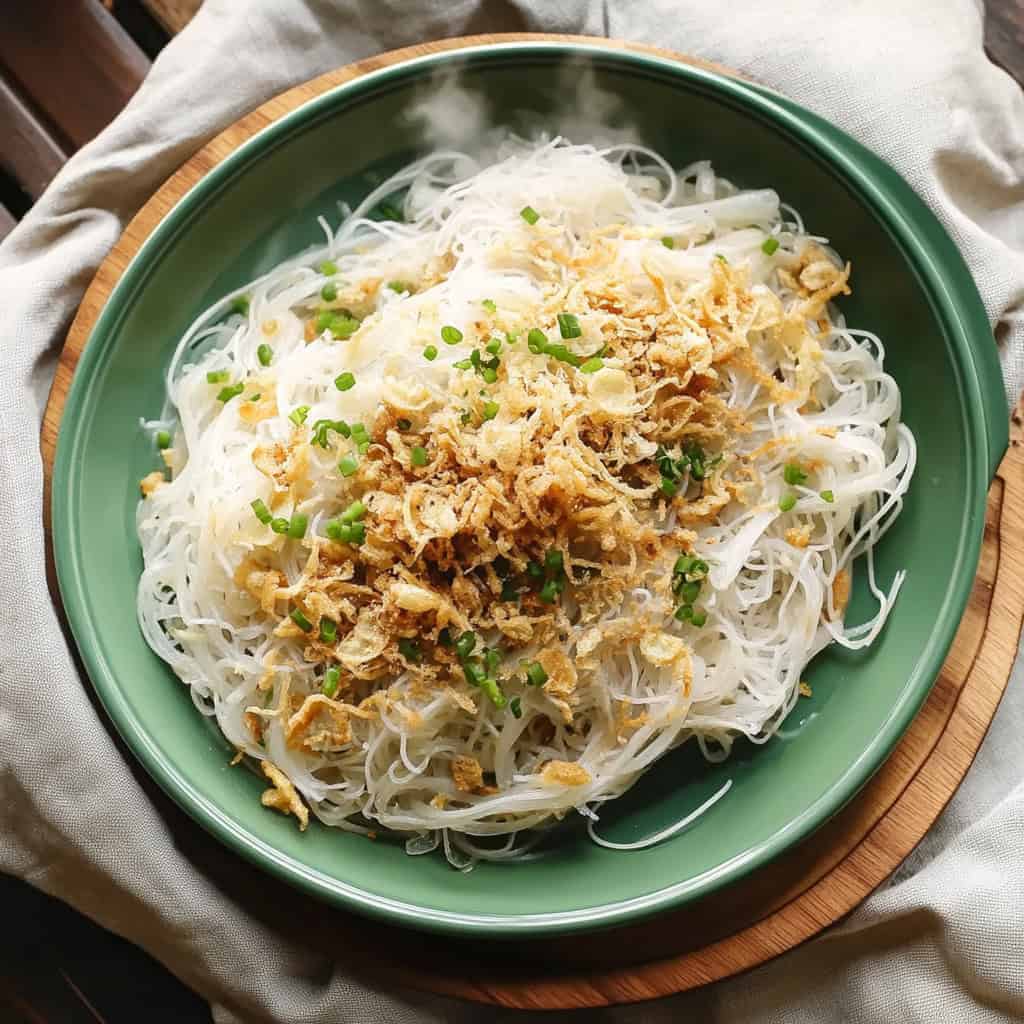
FAQ
Why is it called Pancit Puti?
"Puti" means white in Filipino, referring to the noodles' natural color without soy sauce. This distinguishes it from darker pancit varieties common throughout the Philippines.
Can I make this ahead of time for a party?
Yes, but it's best served fresh. If making ahead, undercook the noodles slightly and add fresh garnishes right before serving. Reheat with a splash of stock to maintain moisture.
How do I know when the noodles are perfectly cooked?
They should be tender but still have a slight resistance when bitten - similar to al dente pasta. If they're mushy or falling apart, they're overcooked.
Can I freeze this dish?
Not recommended as the noodles' texture will change significantly when thawed. This dish is best enjoyed fresh or within a few days when refrigerated.
How do I make crispy fried garlic for garnish?
Thinly slice garlic cloves and fry in oil over medium-low heat until golden brown. Remove immediately and drain on paper towels. The garlic will crisp further as it cools.
What makes a good chicken stock for this recipe?
Use bone-in chicken parts, simmer slowly for at least 1-2 hours, and add aromatics like onion and ginger. Reducing the strained stock concentrates the flavor perfectly for Pancit Puti.
Can I make this dish vegetarian?
Absolutely! Use a rich mushroom stock instead of chicken stock, add extra mushrooms for texture, and replace the chicharon with crispy fried shallots or toasted nuts.
Is Pancit Puti traditionally served at specific occasions?
While all pancit dishes are popular at birthdays for their symbolism of long life, Pancit Puti is versatile enough for everyday meals and special celebrations alike.
Related
Looking for other recipes like this? Try these:
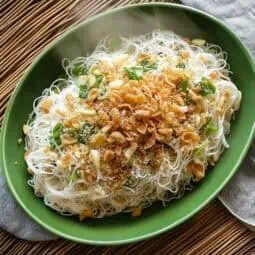
Pancit Puti (Filipino White Noodles)
Equipment
- Large wok (kawali) For even heat distribution and proper noodle tossing
- Strainer [Salaan] For draining soaked noodles
- Sharp knife (kutsilyo) For mincing garlic and shallots
- Cutting board (Sangkalan) For ingredient preparation
- Measuring cups and spoons (Panukat) For precise ingredient portions
- Large pot (kaldero) For pre-boiling chicken
- Tongs [Sipit] For handling noodles while cooking
Ingredients
For the Base
- 400 g rice noodles bihon/pancit - soaked in water for 15 minutes and drained
- 1 large chicken leg and thigh section Hita ng manok - pre-boiled and flaked
- 2 cups concentrated chicken stock Sabaw ng manok
- 6 cloves garlic Bawang, minced
- 2 shallots Sibuyas tagalog, minced
- 3 stalks spring onions Dahon ng sibuyas, chopped
- 2 tablespoons sesame oil
- 2 tablespoons fish sauce Patis
- White pepper To taste
- Cooking oil
For Garnish
- 2 cups crumbled pork rinds Chicharon
- Crispy fried garlic Toasted na bawang
- Lemon or Calamansi wedges
Instructions
- First, soak 400g rice noodles (bihon) in water for 15 minutes, then drain well. While noodles soak, boil the chicken leg and thigh until cooked through, about 20-25 minutes. Remove chicken meat from bones and flake into small pieces.
- Heat your wok over medium heat and add oil. Once hot, add minced garlic and shallots. Cook until shallots are soft and garlic is fragrant, about 2-3 minutes. Don't let the garlic brown.
- Turn heat to high and add your drained noodles and flaked chicken. Start stir-frying while slowly adding chicken stock, just half a cup at a time. Keep stirring to help noodles absorb the stock evenly.
- When noodles have absorbed most of the stock and are almost done, add your chopped spring onions, sesame oil, and fish sauce. Season with white pepper. Keep stir-frying for another minute, mixing everything well. Noodles should be tender but still slightly firm.
- Move everything to your serving plate. Top generously with crispy fried garlic and crumbled pork rinds (chicharon) while the noodles are still hot. Serve right away with lemon or calamansi wedges on the side. Tell everyone to mix in the toppings just before eating to keep them crunchy.
- Remember: The key to great Pancit Puti is in the ginisa (garlic-shallot sauté) and using really good chicken stock. If your noodles look dry while cooking, just add a bit more hot stock. Keep stirring to prevent clumping, and you'll have perfect noodles every time.
Tips from Lola's Kitchen
- Use day-old chicken stock for more concentrated flavor
- Don't oversoak the noodles - they should still be slightly firm before cooking
- "Sangkutsa" (pre-frying) the garlic and shallots until fragrant is crucial for depth of flavor
- Keep stirring continuously to prevent noodles from clumping
- If noodles seem dry, add stock gradually rather than all at once
Nutrition
The Story Behind Pancit Puti
In the vibrant tapestry of Filipino noodle dishes, Pancit Puti stands out for its elegant simplicity. While many associate Filipino pancit with the dark, soy sauce-laden varieties popular in fiestas and celebrations, this white noodle dish tells a different story – one of resourcefulness and pure flavors that originated in the countryside kitchens of Central Luzon.
Unlike its more famous cousins like Pancit Malabon or Pancit Canton, Pancit Puti emerged from the practical wisdom of home cooks who understood that great flavor doesn't always require numerous ingredients. In many rural households, where soy sauce wasn't always readily available, cooks turned to the fundamentals of Filipino cuisine: the aromatic base of ginisa (garlic and shallots) and well-made chicken stock. This combination proved that sometimes less truly is more.
The dish's name, "Puti" (meaning white in Filipino), refers not just to its appearance but represents a cooking philosophy that celebrates the natural flavors of ingredients. Traditional Filipino cooks discovered that when you start with quality rice noodles and infuse them with a rich, homemade chicken stock, you create something remarkable in its restraint. This approach mirrors the Japanese concept of dashi, where pure, clean flavors are prized over complexity.
Today, Pancit Puti has found renewed appreciation among modern Filipino cooks and food enthusiasts who are rediscovering the beauty of minimalist cooking. While many contemporary pancit recipes compete to include more ingredients and toppings, Pancit Puti reminds us of an important culinary truth: when each ingredient is treated with respect and care, even the simplest dish can become extraordinary. The finishing touch of crispy garlic and chicharon adds just enough texture and flavor to complement, rather than overwhelm, the delicate noodles beneath.
As Filipino cuisine gains global recognition, Pancit Puti represents the sophisticated restraint that exists alongside the cuisine's better-known bold flavors. It's a dish that proves that sometimes the most memorable flavors come not from what we add, but from what we choose to leave out. Whether served at a birthday celebration for long life or enjoyed as a comforting weekday meal, Pancit Puti continues to tell the story of Filipino cooking's subtle sophistication.
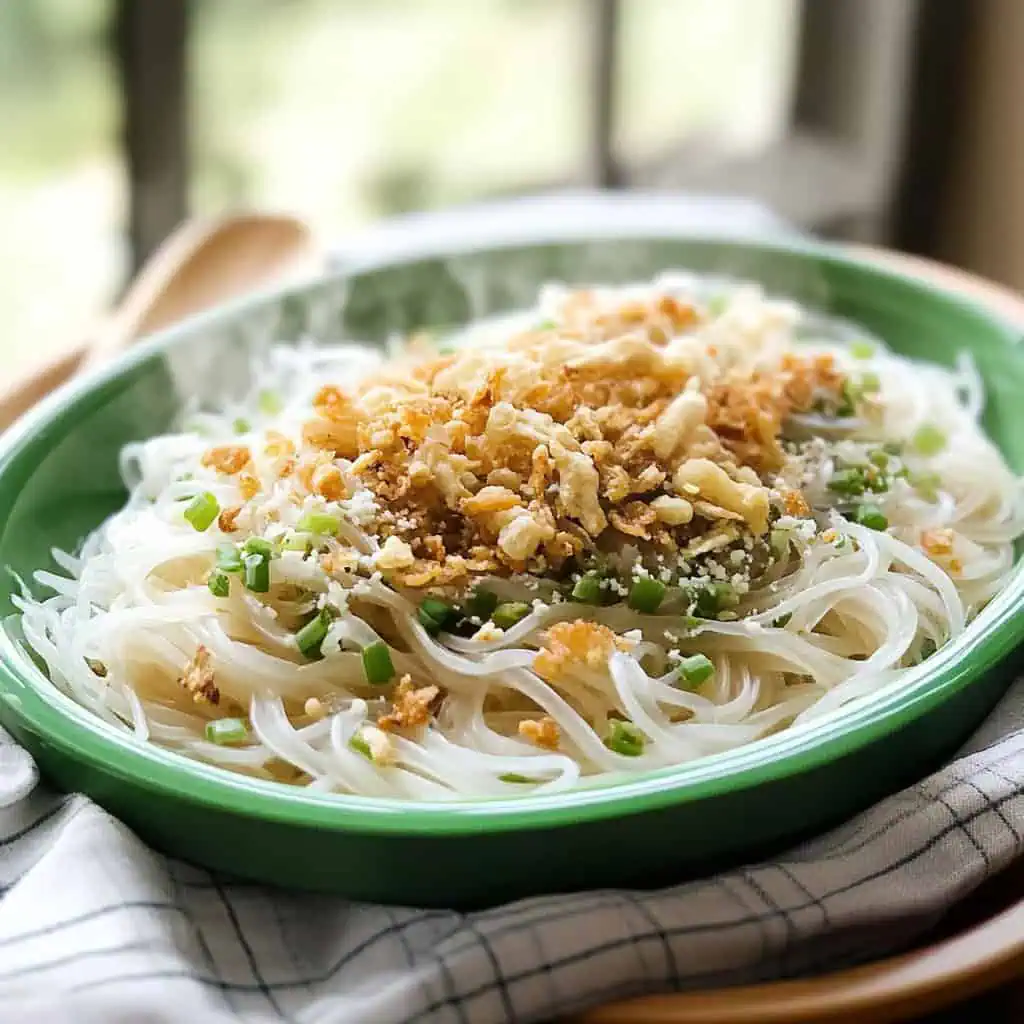

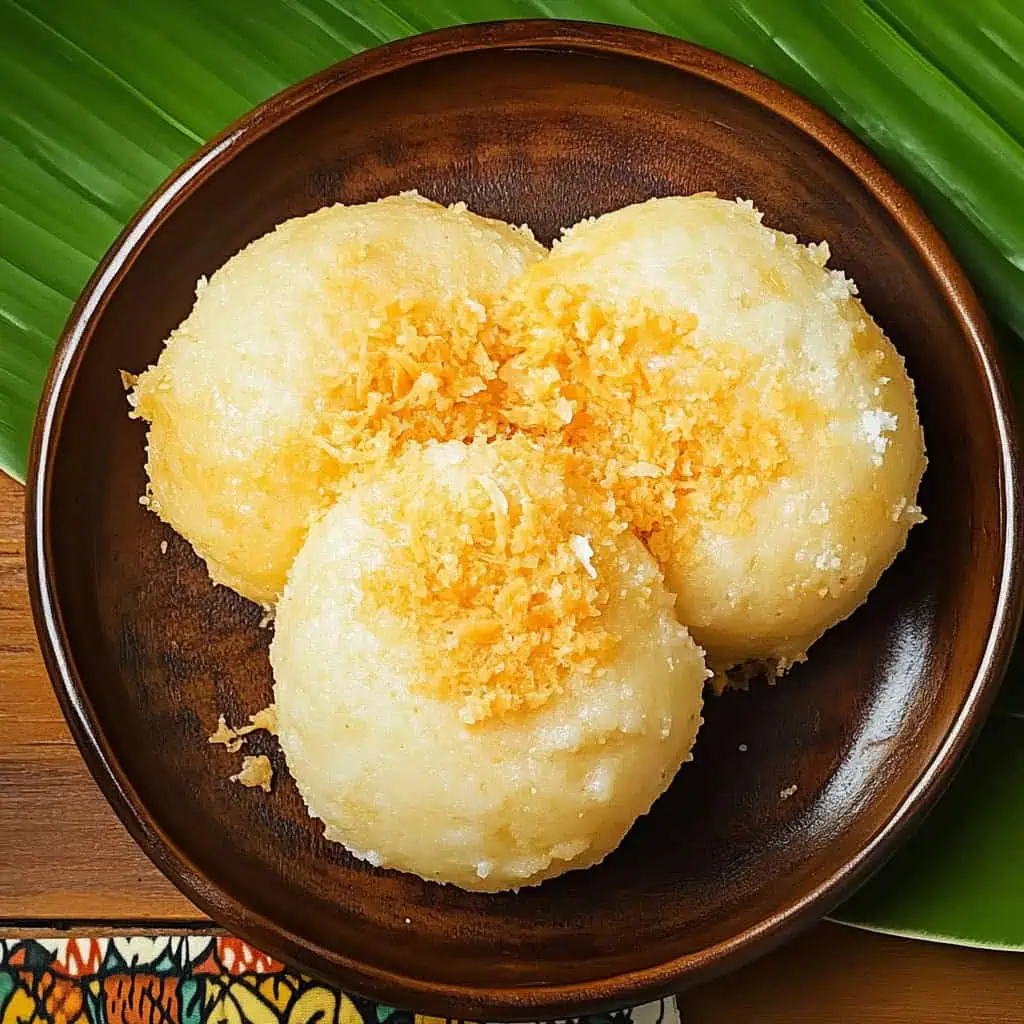
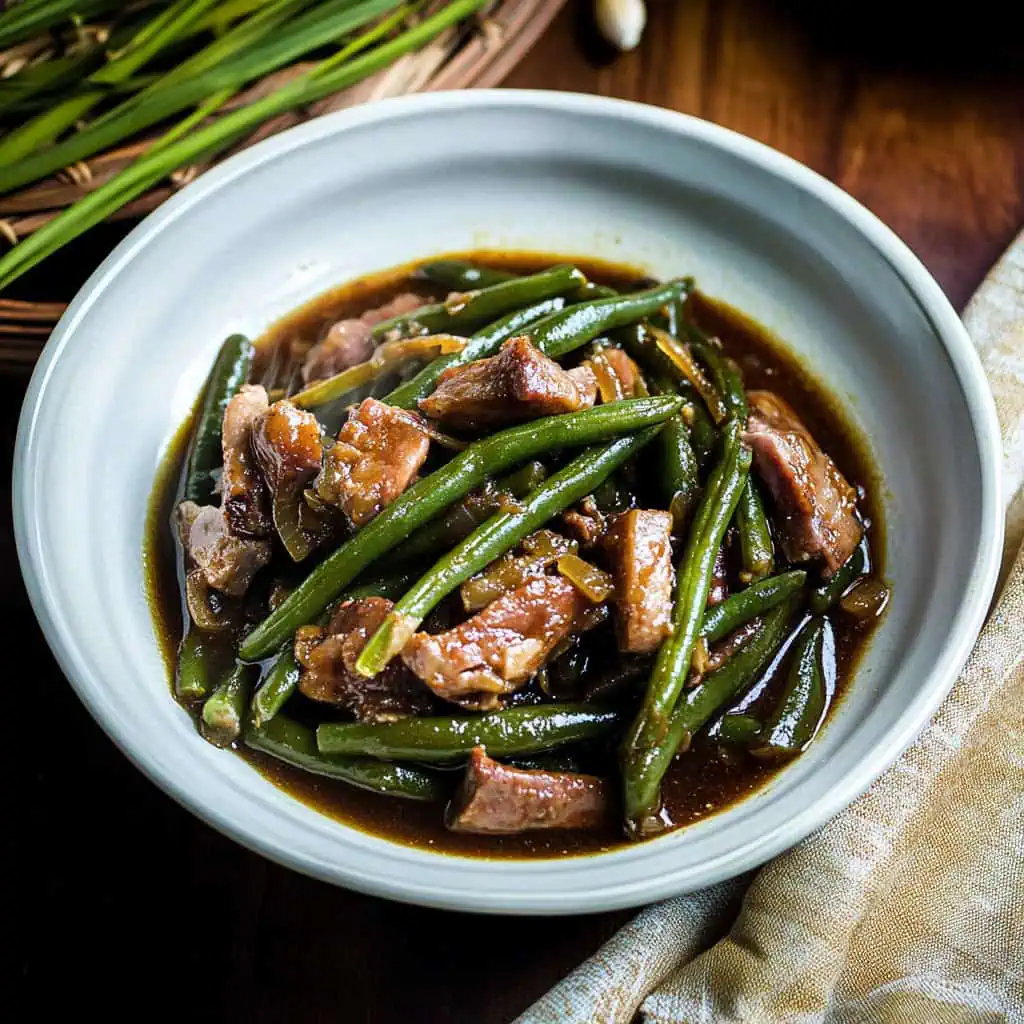

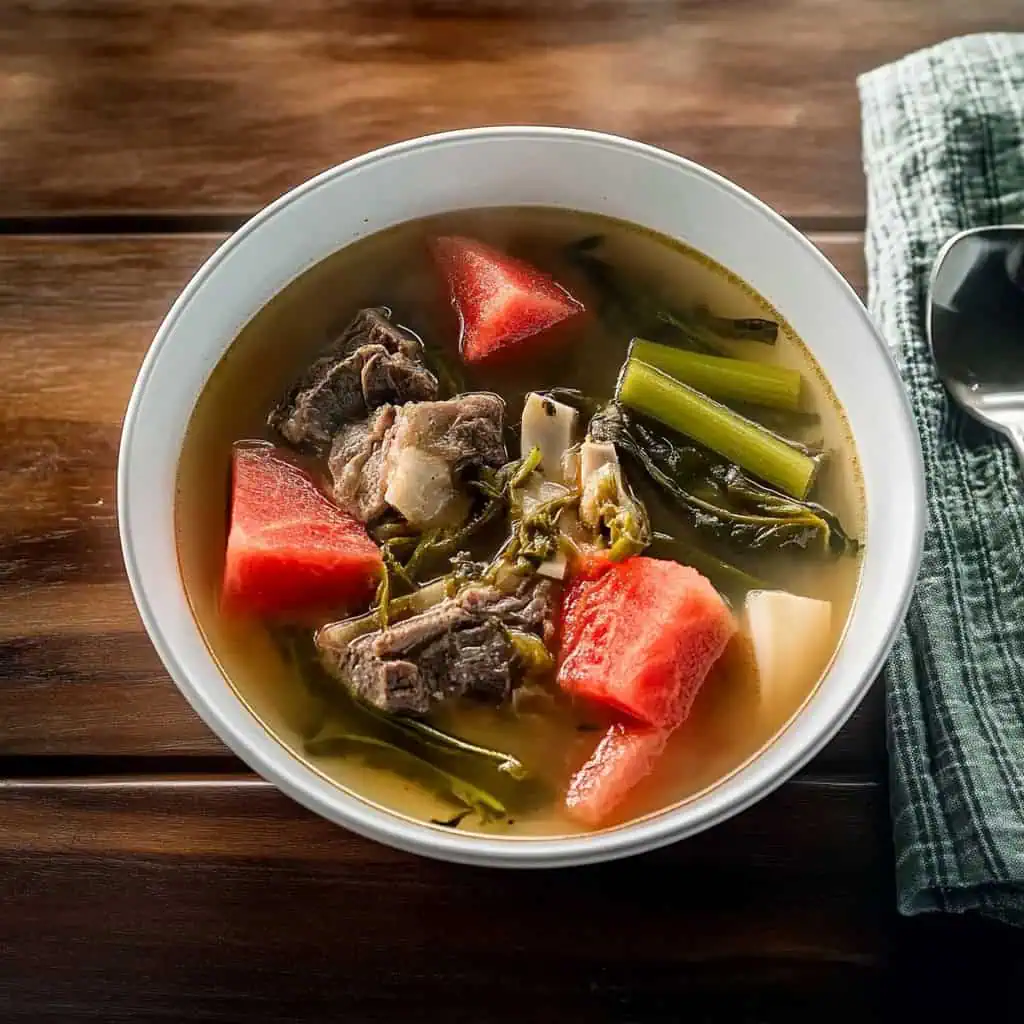
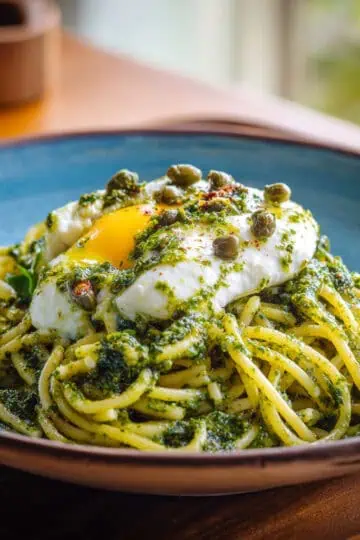
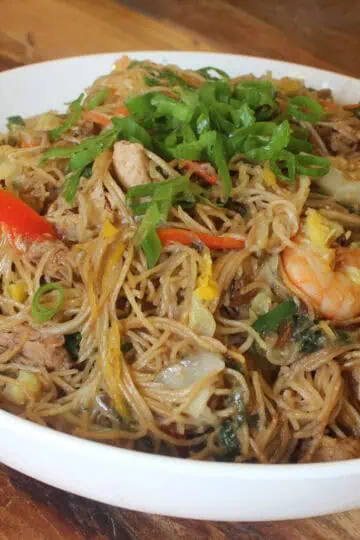
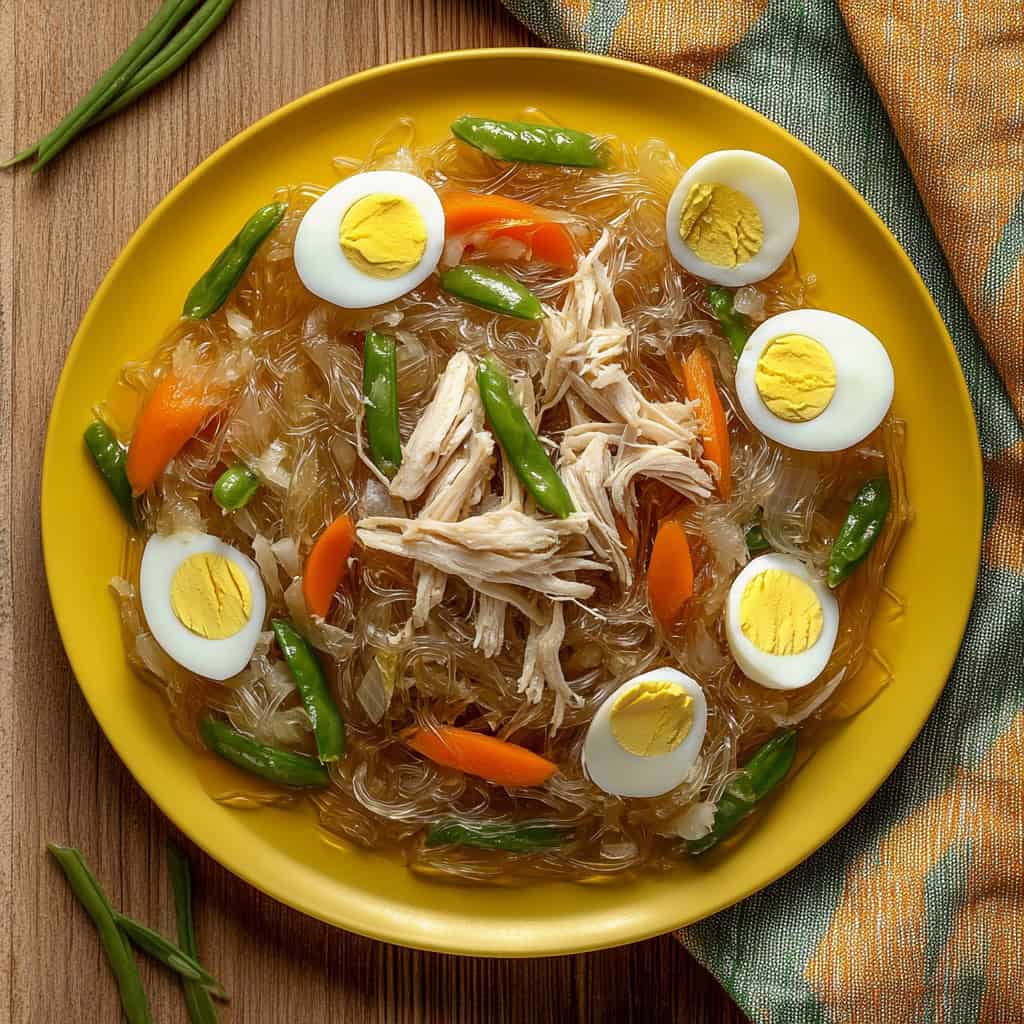
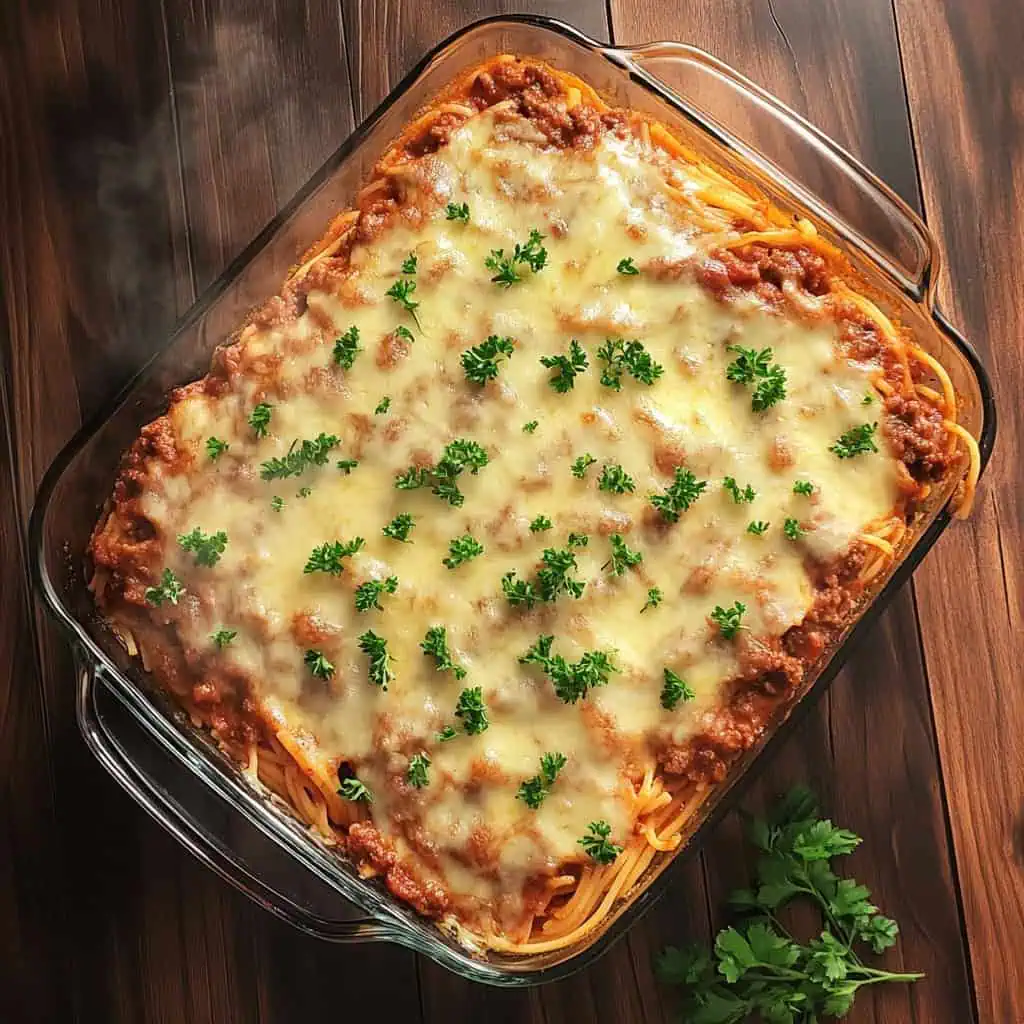
Comments
No Comments